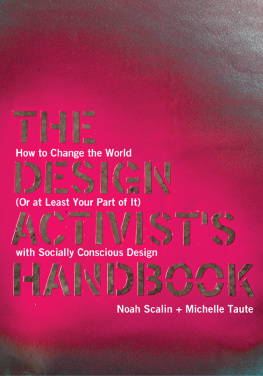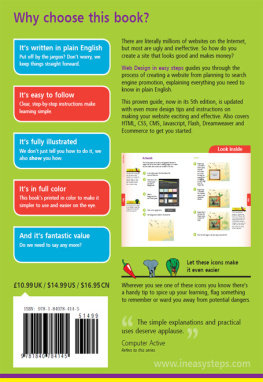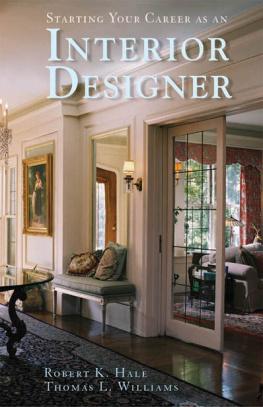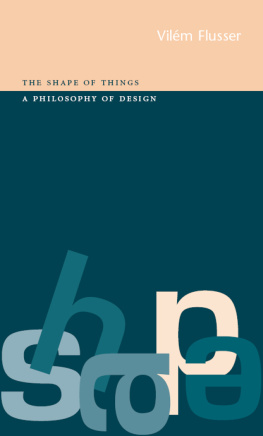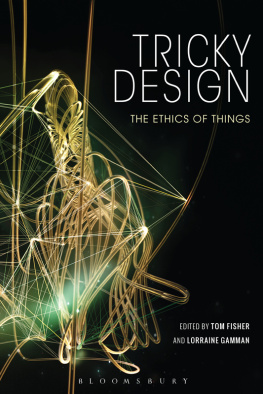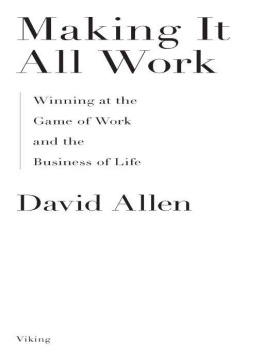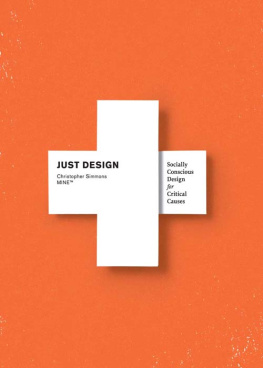FOREWORD
by David Berman
Students in the 2010 Design Rebels class at Virginia Commonwealth University created this installation to show the average waste most people generate annually and how much of it could be reused and/or recycled.
Hey, fellow designers. Youre about to spend some quality time with Noah Scalin and Michelle Taute. If you havent met Noah before, Im pleased to be the one who gets to introduce him to you, because he and I are common souls.
Noah is dedicated to inspiring young designers to make the world better. I first met him in 2004, at a pub table in Richmond. I was in town to speak to students at Virginia Commonwealth University, where Noah teaches a class called Design Rebels, and weve been talking about our shared passion for design activism ever since.
Ive been to over fifty countries and have met a lot of inspiring designers: designers eager to make a difference. But Ive never seen anyone deliver a book like this one, where the authors actually lay out, step-by-step, how to turn your intent into action.
Its easy to dwell on the worlds troubles, but we live in a truly remarkable time. As designers, we are the stewards of knowledge. And it has never been easier, never less expensive, never more immediate, to send messages over great distances to larger and larger populations.
In the past, most designers didnt have the wealth to publish their own material, so they were at the mercy of clients or employers to find projects that consisted of design products or messages that didnt just do good design, but did good. Today, the internet makes it possible for designers to own a printing press. They can launch self-directed projects or businesses, with the internet as the means of distribution or even the means of fabrication.
This book includes many examples of designers doing just that, and it gives every designer a glimpse into the strategies, techniques and passion it takes to turn ideas and daydreams into rewarding design activism.
The internet makes so much sharing possible. And yet as Nicholas Negroponte reminds us, for the majority of people alive today, the internet is still just a rumor. Only 30 percent of humanity has ever interacted with the internet. But over the next ten years that will change forever. Before this decade ends, most human beings will have had their first interaction with the internet.
So, will that first access to the internet be about sharing the best we have to share? Will it be about ideas like medicine, conflict resolution, wisdom, compassion standards, democracy, governance and free thought? Or will it be just one more way to convince ever-growing populations in the developing world that they need to consume stuff - way more stuff - in order to feel they belong in the global culture?
Will designers bring our best skills out to support goodness and truth? Or will we prop up the greed disorder of a minority by using our cleverness to help convince more and more people that they are not tall enough, thin enough, white enough, curly enough, cool enough?
Perhaps the internet provides us with our single most valuable opportunity in which to help build a better world. Indeed, we live in an age where everyone is a designer, and the future of civilization is our common design project. And this book ties the loftiest goals to practical next steps.
Friends, we have the opportunity to decide whether we will simply do good design or we will do good with design.
Noah and Michelle help us imagine what is possible if designers do not participate in the export of overconsumption and the unbridled fulfillment of greed. No one understands the powerful mechanism behind these manipulations better than design professionals, and we have the creativity and persuasiveness to make a positive change. We must act, be heard and sometimes simply say no by designing a better yes.
Are we too late? Not at all. The time is perfect. Two decades ago, if you said you were a graphic designer, people asked, Whats that? Now they are asking: What are designers really about? Are they tradespeople? Are they craftspeople? Are they artists? Professionals? Are they ethical? Responsible? What are our answer going to be?
Design is a very young profession. Weve barely begun. Over 95 percent of all designers who have ever lived are alive today. Together it is up to us to decide what role our profession will play. Is it going to be about selling sugar water, and smoke and mirrors to the vulnerable child within each one of us? Or is it going to be about helping repair the world?
Lets embrace a responsible and honored role in society. Once we do so, society will truly recognize the power of design and the special role that designers play in a brighter future. I know that if we fulfill the gifts of our professional skills by recognizing our power and the stewardship responsibility that accompanies that power, we can make a real difference. And since we can, we must.
And how to pursue such a lofty goal? Weve all heard that every journey begins with one small step. Youve taken that step by picking up this book. Now let Noah and Michelle provide you with all the steps that follow.
Intent into action. Its what theyre about, and its what we all need to be about.
So dont put down this book. Instead, lets get started.
David Berman, Deputized Design Rebel
Image 1
David Berman (.
P.S. Are you still reading this foreword? Youre supposed to have already gone ahead with the rest of the book. Get on it. Now. We need you to do this. Your grandchildrens children need you to do this. Your soul needs you to do this. Go, design rebels, go!
PREFACE
Noah Scalin: The Life of a Socially Conscious Designer
Do you want to be a hired gun who works for the highest bidder? Or to give a voice to people, causes and ideas that deserve to be heard? Noah created this image about freedom of expression for the international Poster for Tomorrow exhibition.
I attended my first protest rally in a stroller. At least thats what my mom has told me. The first one I remember attending was a march for the Equal Rights Amendment when I was a little bit older. I wore a large ERA YES button while I roller-skated through the crowd. Suffice to say, I grew up believing that if you wanted social change you had to do something about it.
Image 2
At the first protest rally Noah remembers attending as a child, he wore a large ERA Yes button and roller-skated through the crowd.
So it came as a bit of shock, years later when I grew up, to discover that I was expected to put these convictions away in the name of making a living (not my parents expectations, mind you, but pretty much the rest of the worlds). I guess I had always assumed that ones values and ones vocation would somehow align. But when I graduated college I was suddenly thrust into a world where people hung up their ethics on the way into the office - and that just wasnt acceptable to me.

